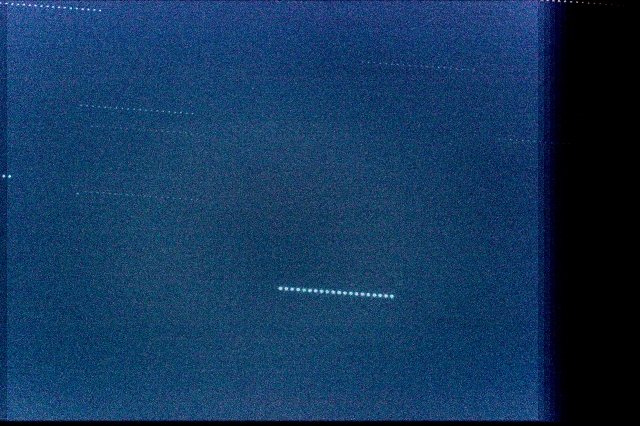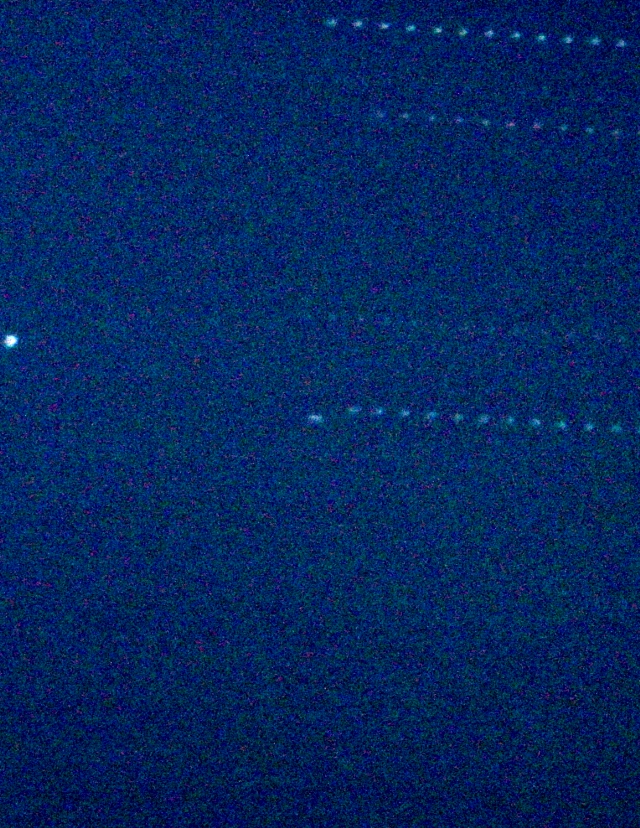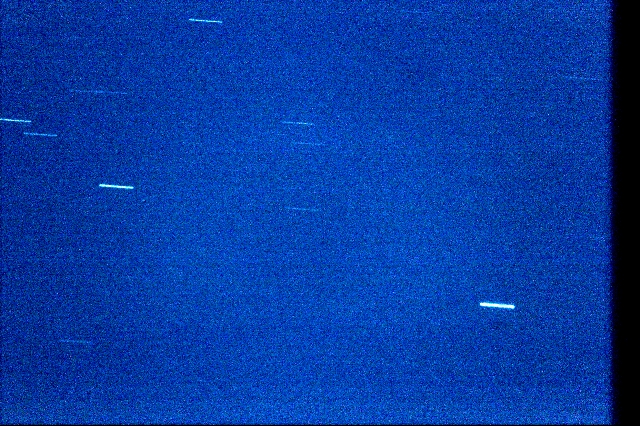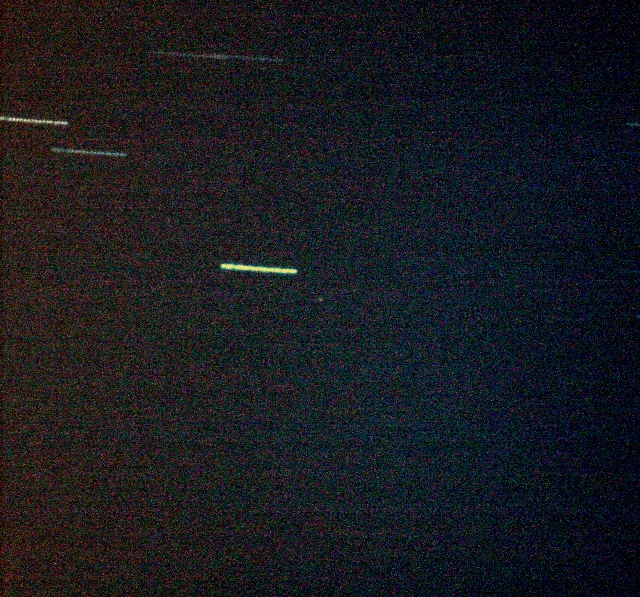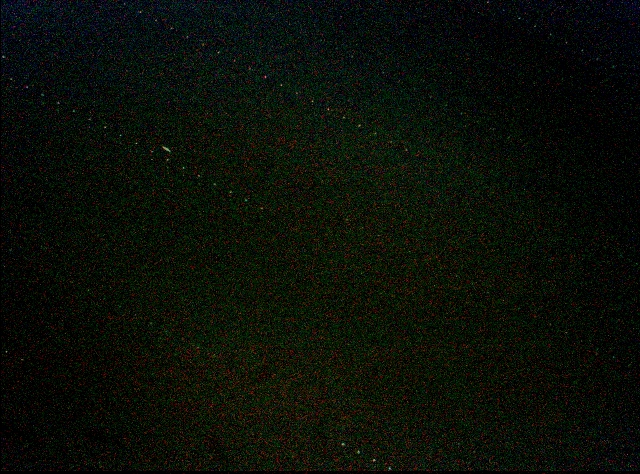
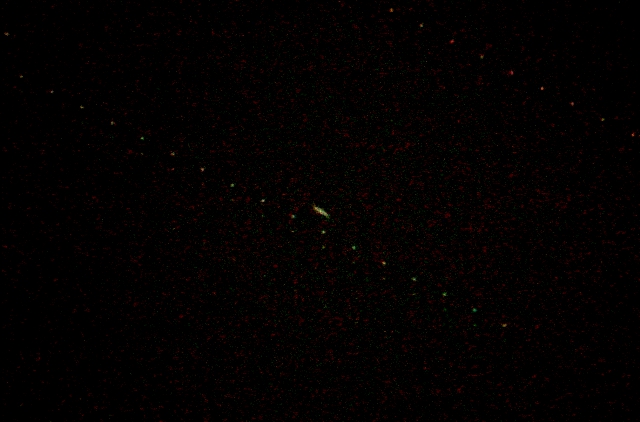
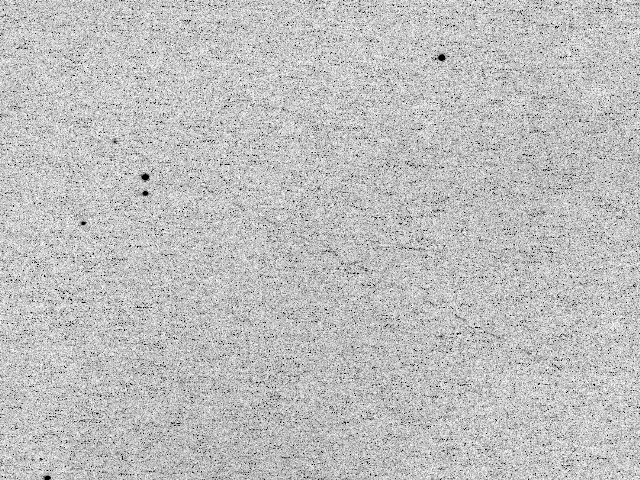
2016/03/16T19:50:58〜20:13:07までの30秒間露光20枚を合成
P/2016 BA14
露光時間:30秒*20=10分 t-T=+0秒
Mewlon210FR/2080mm + LPS-P2 + 60D/ISO3200 / EM200Temma2
反転画像は1721*1291を切り出し、640*480にリサイズ
StellaImage6.5で加算合成、レベル補正とリサイズ
|
P/2016 BA14
|
|
Discovery of Activity at Asteroid 2016 BA14
The orbit of asteroid 2016 BA14 has been shown to be remarkably similar to that of comet 252P/LINEAR 12. With both objects headed for close approaches to the Earth in March 2016, we decided to look closely at asteroid BA14, and guess what we found: a comet's tail! Asteroid 2016 BA14 was discovered by the Pan-STARRS survey on 2016 Jan 22. At the time the object was 19th to 20th magnitude, astronomer-speak for 250,000 times fainter than the faintest stars the unaided eye can see in a dark skies. After a few days of additional observations, it was designated a potentially hazardous asteroid due to its tendency to make close approaches to the Earth [1]. The next close approach will be on 2016 March 22, when it swings by us at a distance of 3.5 million km (9 lunar distances) [2]. That distance is not unusual for asteroids in near-Earth space, but it is something we want to keep track of. However, more interesting than the Earth close approaches is the orbit itself. In an e-mail to the Yahoo Comets Mailing List, Denis Denisenko noted an eerie similarly with comet 252P/LINEAR 12, which was already poised to make its own close approach to the Earth in March. The orbits are shown in the figure below. Comet LINEAR 12 was discovered in the year 2000 during a previous close approach to Earth. On March 21st, the comet will make its closest approach yet, passing just 5.3 million km (14 lunar distances) from the Earth [3]. Not notable for an asteroid, but historic for a comet! Because there are fewer comets in near-Earth space, comets rarely pass so closely. My colleagues Nalin Samarasinha and Jian-Yang Li and I estimate LINEAR 12's passage to be the closest known comet flyby since IRAS-Araki-Alcock in 1983. Not willing to let such an opportunity pass us by, we have secured 6 orbits of Hubble Space Telescope time to snap some high-resolution photos during the close approach. 3月23日に地球に0.024天文単位(=360万km)まで大接近し、12.8等まで明るくなった(3月22日、Paul Camilleri)。ほとんど小惑星状の姿。今後は急激に減光する。既に14.0等まで暗くなった(3月26日、Jean-Francois Soulier)。日本からは、非常に条件良く観測できる。南半球では、今後は低空。252P/LINEAR と軌道が良く似ている。 The Closest Approaches of Comets to Earth Designation Min. Dist. Date Description C/1491 B1 0.0094 1491, Feb. 20 D/1770 L1 0.0151 1770, Jul. 1 coma 2 degrees 23 minutes across Tempel-Tuttle (1366) 0.0229 1366, Oct. 26 "sparkling star" C/1983 H1 0.0311 1983, May 11 magnitude 2; coma 3 degrees Halley (837) 0.0334 837, Apr. 10 tail 60 degrees long |
2016年03月24日 12.8等



